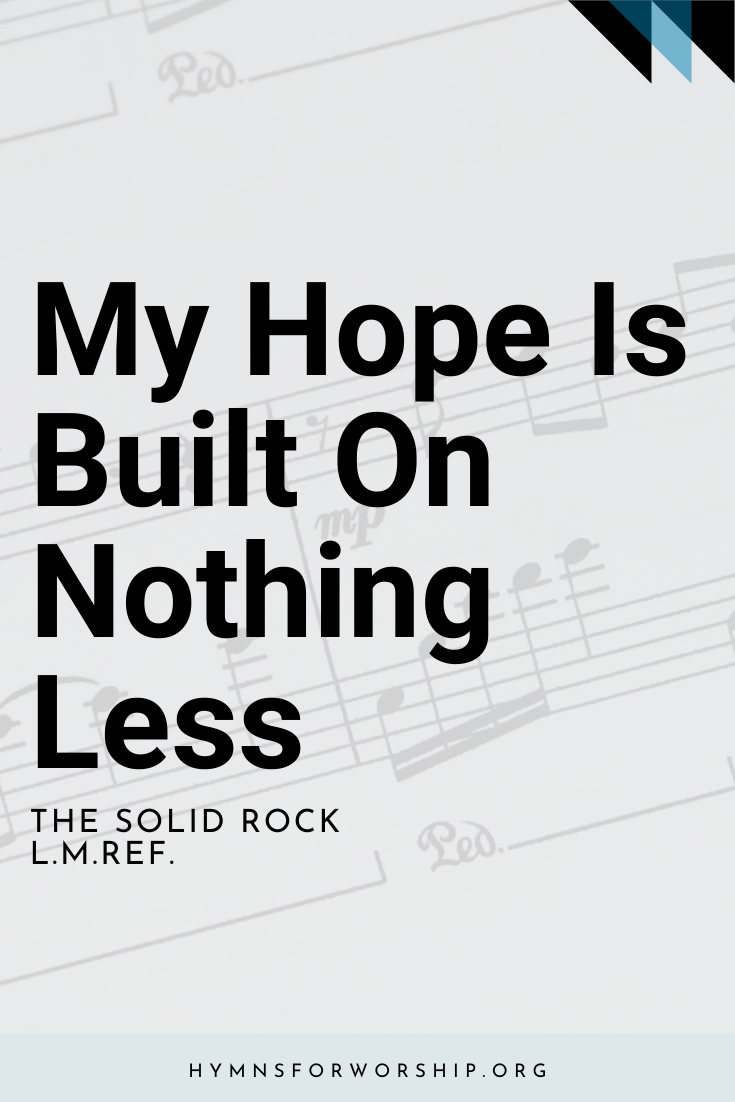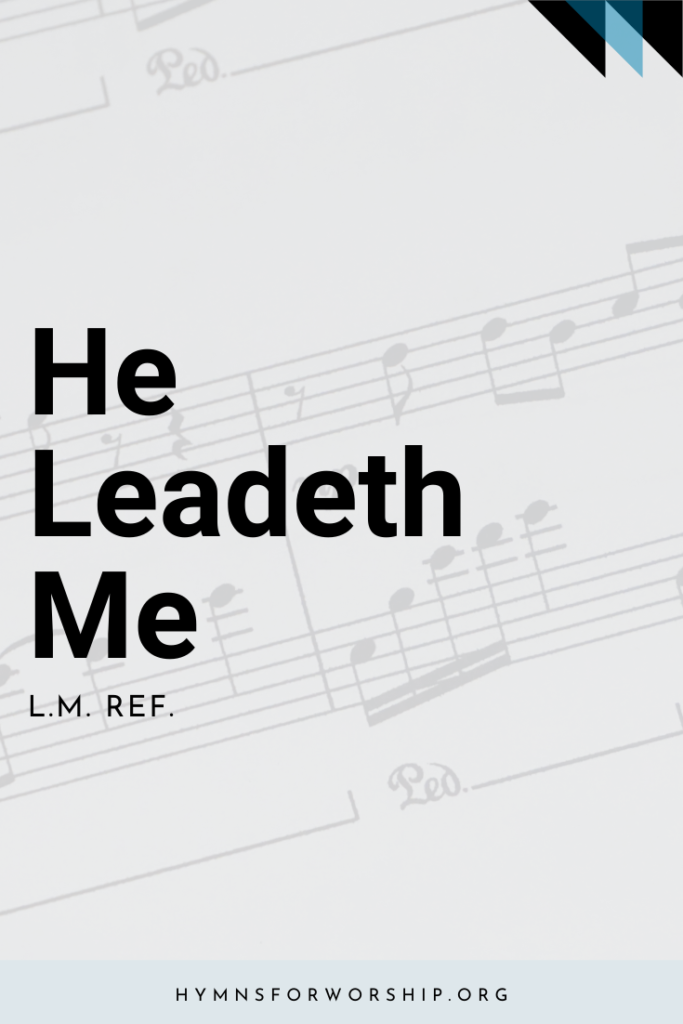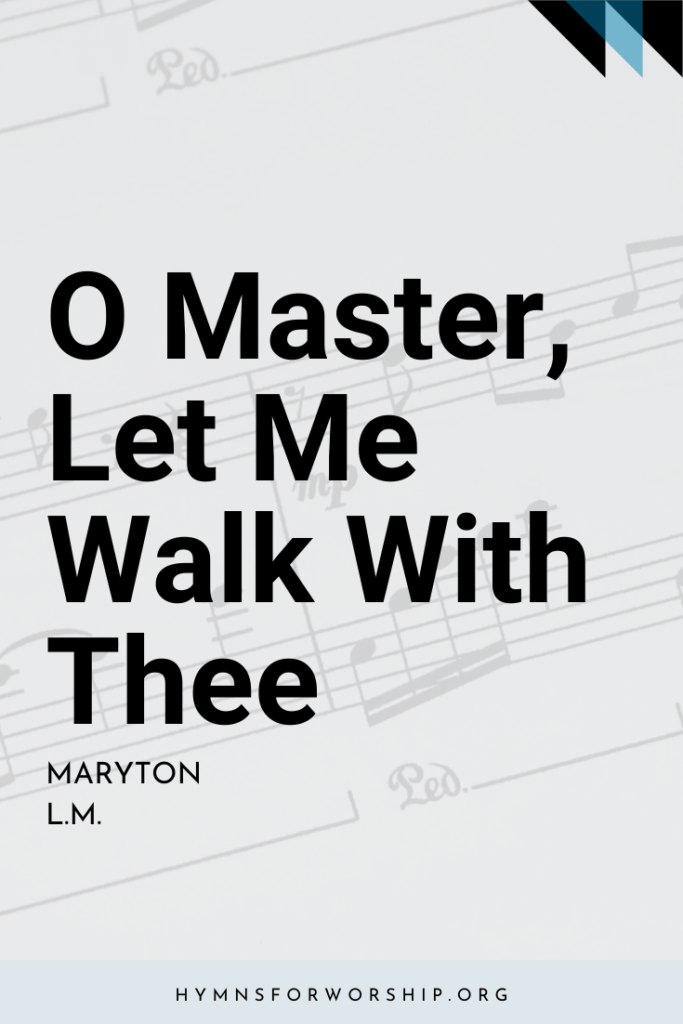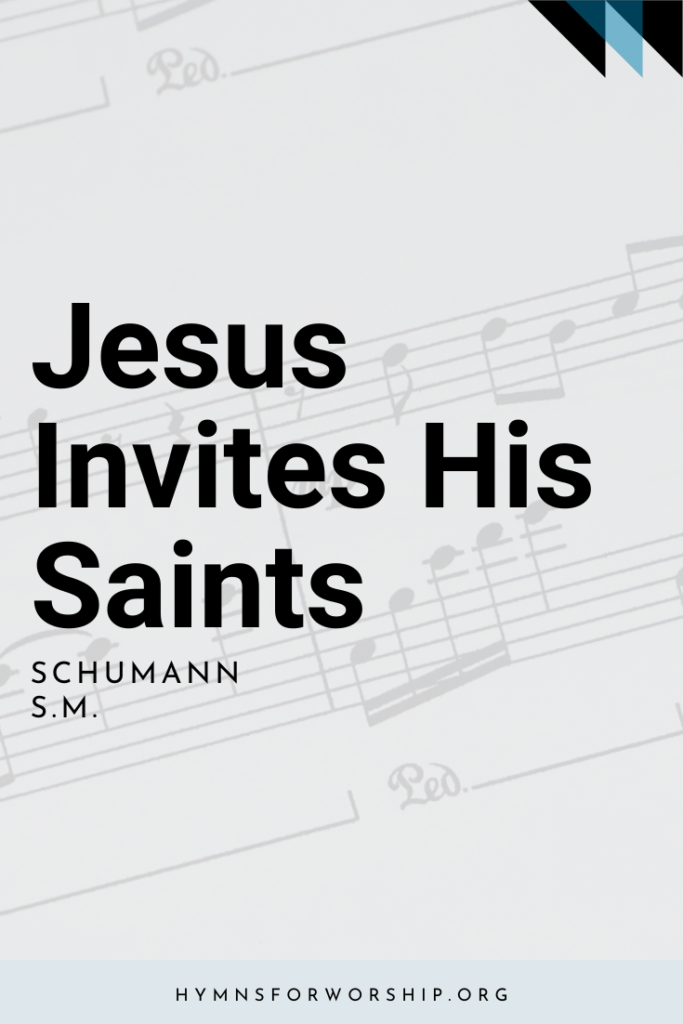CHRISTIAN LIFE >> FAITH & TRUST
SDAH 522
My hope is built on nothing less
than Jesus’ blood and righteousness.
I dare not trust the sweetest frame,
but wholly lean on Jesus’ name.
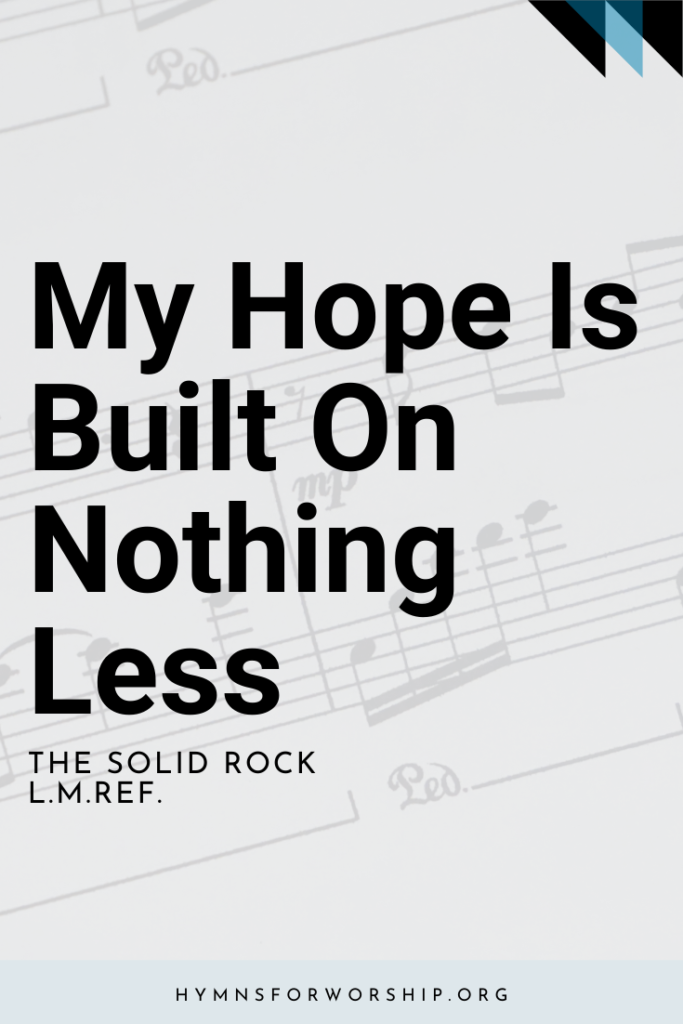

Text
1
My hope is built on nothing less
than Jesus’ blood and righteousness.
I dare not trust the sweetest frame,
but wholly lean on Jesus’ name.
Refrain
On Christ the solid rock I stand;
all other ground is sinking sand,
all other ground is sinking sand.
2
When Darkness veils his lovely face,
I rest on his unchanging grace.
in every high and stormy gale,
my anchor holds within the veil.
3
His oath, his covenant, his blood
supports me in the whelming flood.
When all around my soul gives way,
he then is all my hope and stay.
4
When He shall come with trumpet sound,
O may I then in him be found!
Dressed in his righteousness alone,
faultless to stand before the throne.

Hymn Info
Biblical Reference
(a) Ps 143:11 (b) Acts 15:11; Heb 6:19 (c) Ps 18:18 (d) 1 Thess 4:16; Phil 3:9; Jude 24 (r) Matt 7:24, 26
Author
Edward Mote (1797-1874)
Text Source
1834
Hymn Tune
THE SOLID ROCK
Metrical Number
L.M.Ref.
Composer
Wm. B. Bradbury (1816-1868)
Year Composed
1863
Alternate Tune and Harmony
Alt. tune MELITA, SDAH 85
Alt. harmony SDAH 200
Theme
FAITH & TRUST
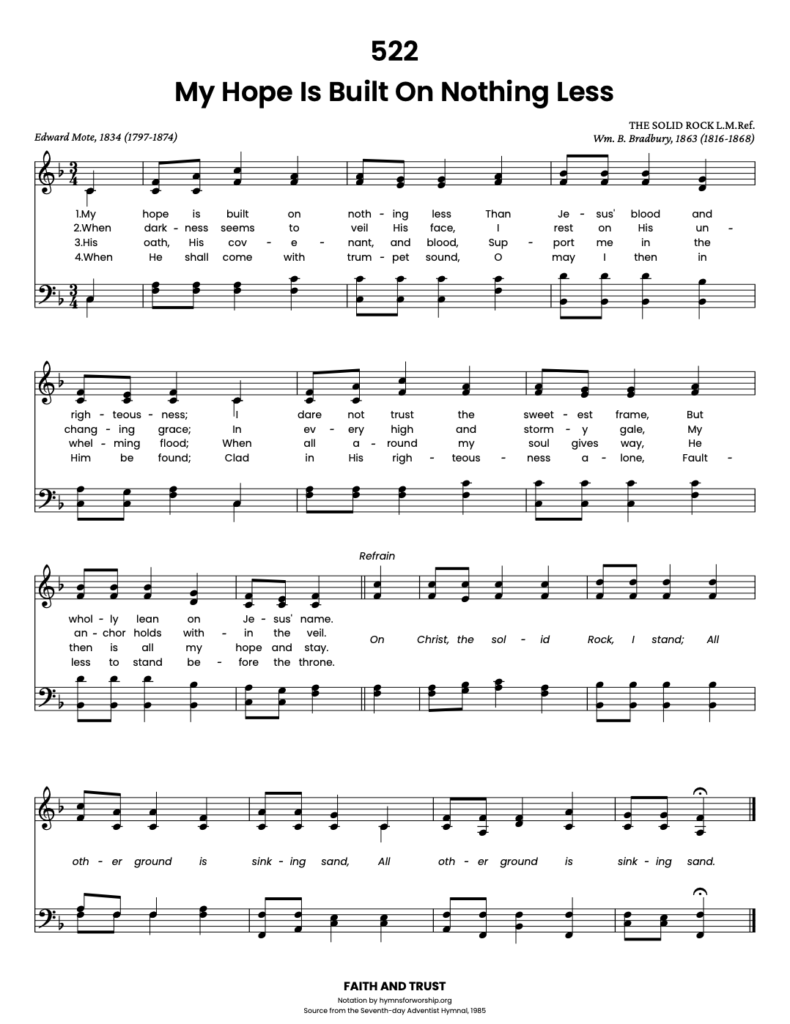
Get the hymn sheet in other keys here
Notes
Make each hymn more meaningful with these helpful tools: Short, ready-to-use hymn introductions for church bulletins, multiple ways to introduce a hymn based on your worship theme and in-depth history and insights to enrich your song service.
Obedience is a proof that our faith is standing on the solid Rock. Faith in the name of Jesus, the Solid Rock is the power that enables us to obey. Faith in His cleansing blood and righteousness makes our obedience holy and acceptable like the obedience of Jesus. (Lesson 4, 2nd Quarter 2021 – Thursday, Covenant Obligations, 4/22/2021)
We have no strength against the enemy and could never hope to win if it were not for Jesus. Because of His blood and righteousness, we can have victory over sin every time. No matter how fierce the fires of temptation, they cannot consume us as we abide in Him. (Lesson 4, 3rd Quarter 2022 -Monday, Faith Amid the Refining Fire, 7/18/2022)
When we find no other help, we can look to Jesus and know He is our Helper. He is the only One we can trust, and He will never fail us in our need. (Lesson 7, 1st Quarter 2023, Managing for the Master – Sunday, “God’s Provision for the Poor” 2/13/2023)

